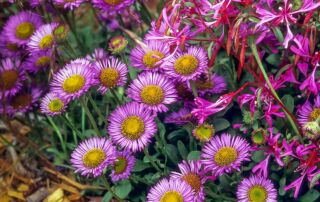Salvia x ‘Bee’s Bliss’
The groundcover salvia known as ‘Bee’s Bliss’ has been popular with gardeners and nursery professionals almost since its introduction in 1989 -- and for good reason. With so many excellent salvias in the trade today, there are others that are more powerfully scented or more conspicuously floriferous but few are as accommodating, reliable, and inherently useful in the mostly summer-dry garden. Salvia 'Bee's Bliss' This cultivar was discovered at the University of California Botanical Garden in Berkeley and is believed to be a hybrid of Salvia leucophylla and S. sonomensis (or possibly S. clevelandii). ‘Bee’s Bliss’ stays








